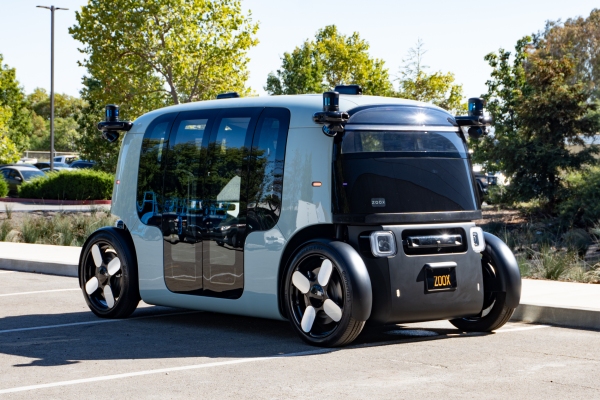The Zoox robotaxi has more in common with a supercar than you think. Look past the Zoox’s breadbox-shaped exterior and inside is the same carbon fiber cabin that can be found in a McLaren.
“Yes, we know that supplier very well,” Andy Piper Zoox’s VP of vehicle development told , when it’s pointed out that the Zoox robotaxi’s carbon fiber cab is similar to what supercar automaker McLaren uses in its F1 and production vehicles.
The super strong, yet lightweight material protects occupants during collisions either on the race track or in the regular world and Zoox has added it to its autonomous cube. It’s part of a series of safety features the Amazon-acquired startup has implemented in its prototype vehicles as it prepares to test its robotaxis in San Francisco, California, Seattle, Washington and Las Vegas, Nevada with the eventual goal of launching a commercial service.
Modular design

Image Credits: Roberto Baldwin
Either on its own or with a little nudge from network-connected monitors, it’s the sensors that make sure the vehicle can see the world. The Zoox systems offers up a 360 view of the world. Prominently placed on the four corners of the vehicle’s roof are lidar, radar, and cameras.
While not aesthetically pleasing, this sticking-out-from-the-main-body-like-antennas setup does more than help see what’s around, it’s also built in a way so that it can be replaced without too much disruption to the vehicle. As the company advances its sensor array, it can easily update the hardware on the vehicles already deployed.
This modular thinking also applies to the driver units situated on either side of the vehicle. The entire apparatus includes the wheels, battery pack, and motor. The rig is slid into the vehicle and bolted on. The thinking is that if any of those items require service, the drive unit in need of maintenance can be removed and service performed. Meanwhile, another drive unit can take its place and the vehicle itself can be back on the road with minimal disruption.
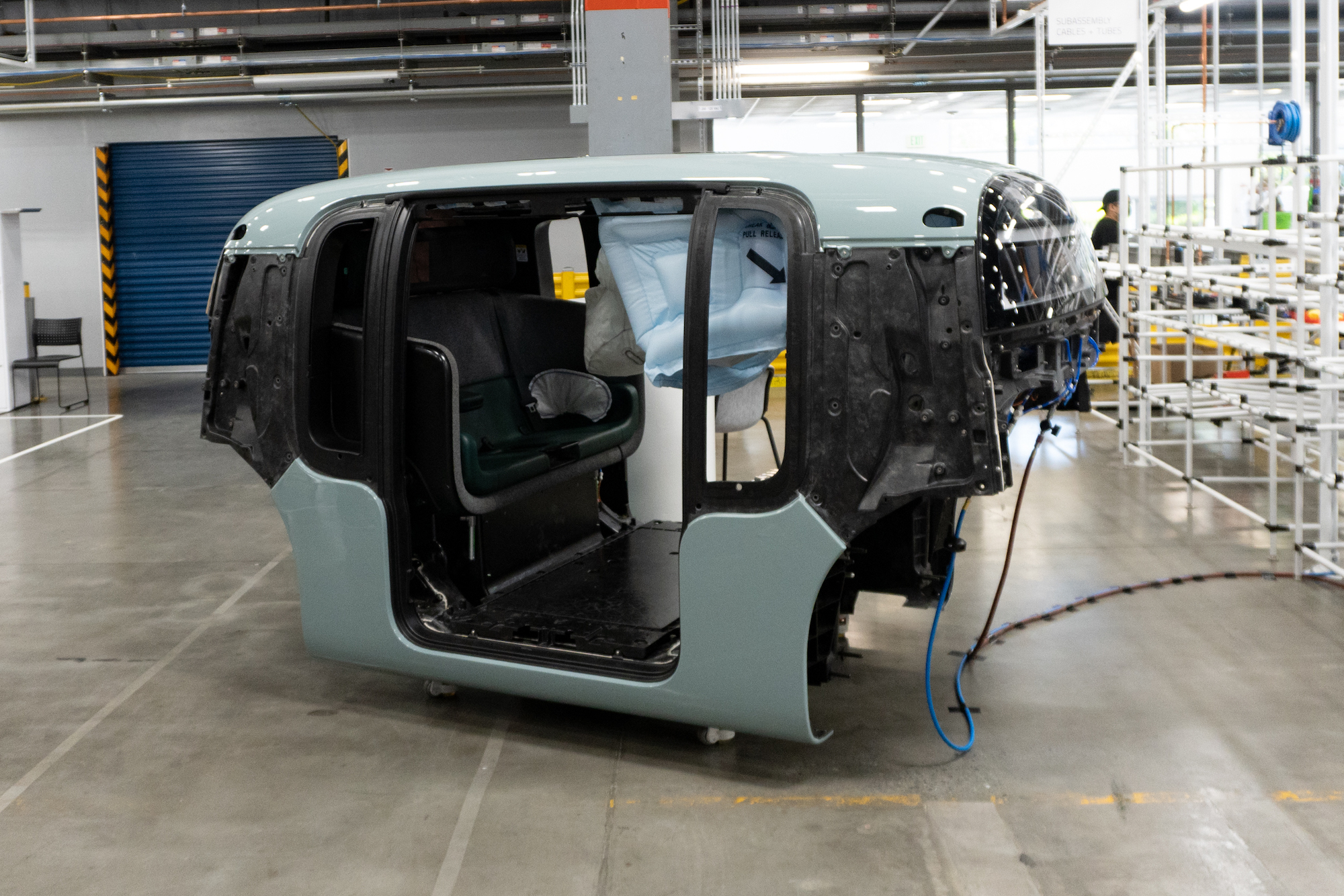
Image Credits: Roberto Baldwin
Each of these units contains a battery pack with 66.5kWh of capacity bringing the total battery capacity of the vehicle to 133 kWh. Zoox wouldn’t share projected range numbers but did say that the goal is to keep the vehicle in service for at least 16 hours.
The vehicles themselves are based on a 400-volt system and support DC fast charging up to 100kW. Considering the battery size and that its usual route will be in dense urban traffic, staying on the road for the full 16 hours should be achievable while the charge rate will be more than adequate for overnight refilling of the batteries.
Redundant technology
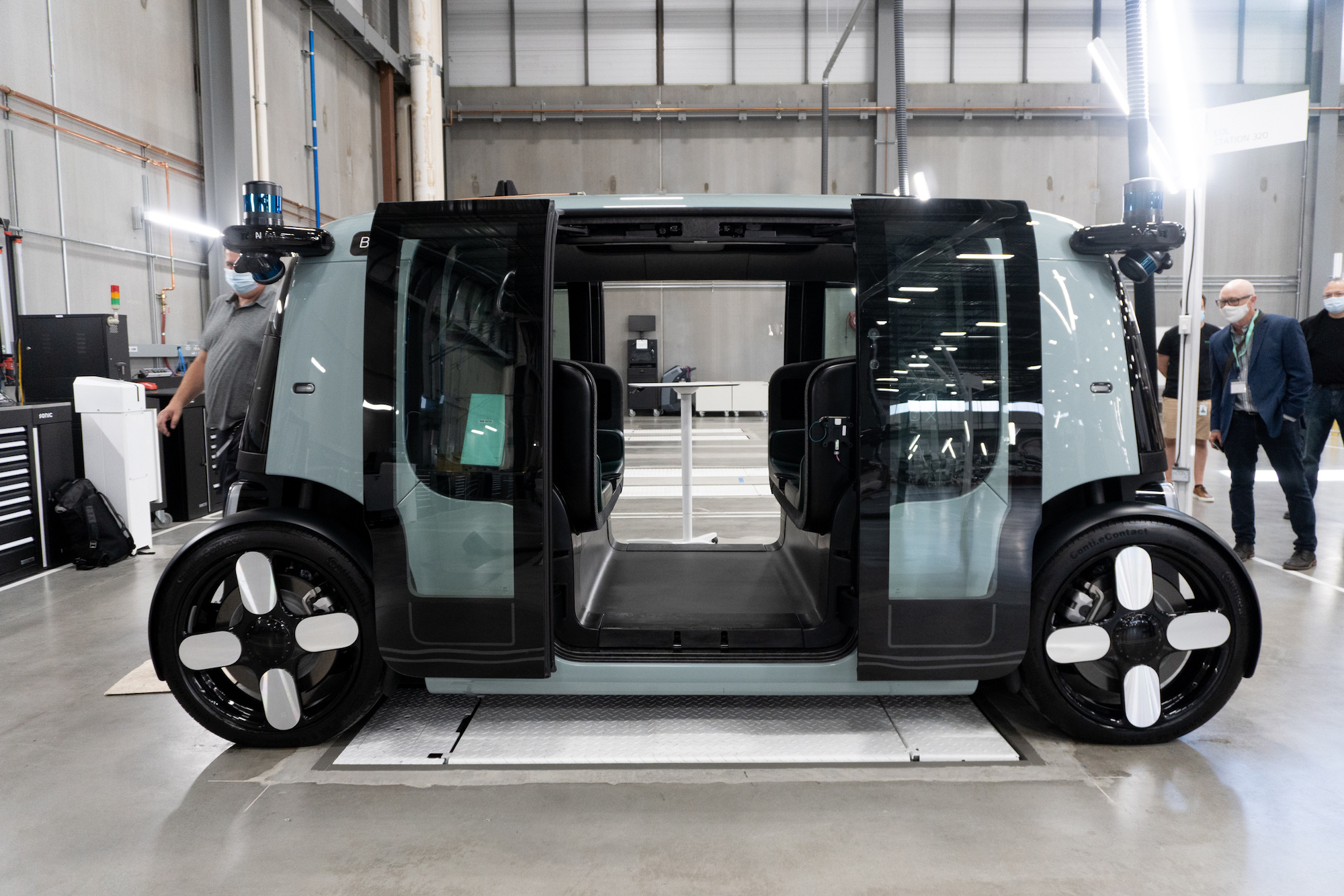
Image Credits: Roberto Baldwin
In order to navigate cities, in addition to the usual sensor suite, Zoox will create constantly updated high-definition maps. To make sure the maps are up to date, the Zoox training and Zoox ride-hailing fleet will record the world as they drive around using the sensor suite.
Companies like GM already use these types of maps to help their Super Cruise driver assistance system. It helps the system only understand what’s happening right in front of the vehicle, but also down the road. What gives Zoox a leg up is that it would be constantly updating its information with the same data the fleet creates to drive around.
While driving autonomously requires the vehicles to be able to do so without a solid connection to home base, there are instances where autonomous vehicles can become confused. When that happens, monitors can help a perplexed vehicle by giving it a new path to get around the issue.
A recent issue with the Cruise fleet in San Francisco where cars in the autonomous fleet congregated at an intersection can be attributed to a network-connection issue. Cruise HQ couldn’t tell the cars the best way to get out of the predicament. Zoox, multiple secure wireless networks. This redundancy in network access should reduce the chances of what happened to Cruise.
Rider experience
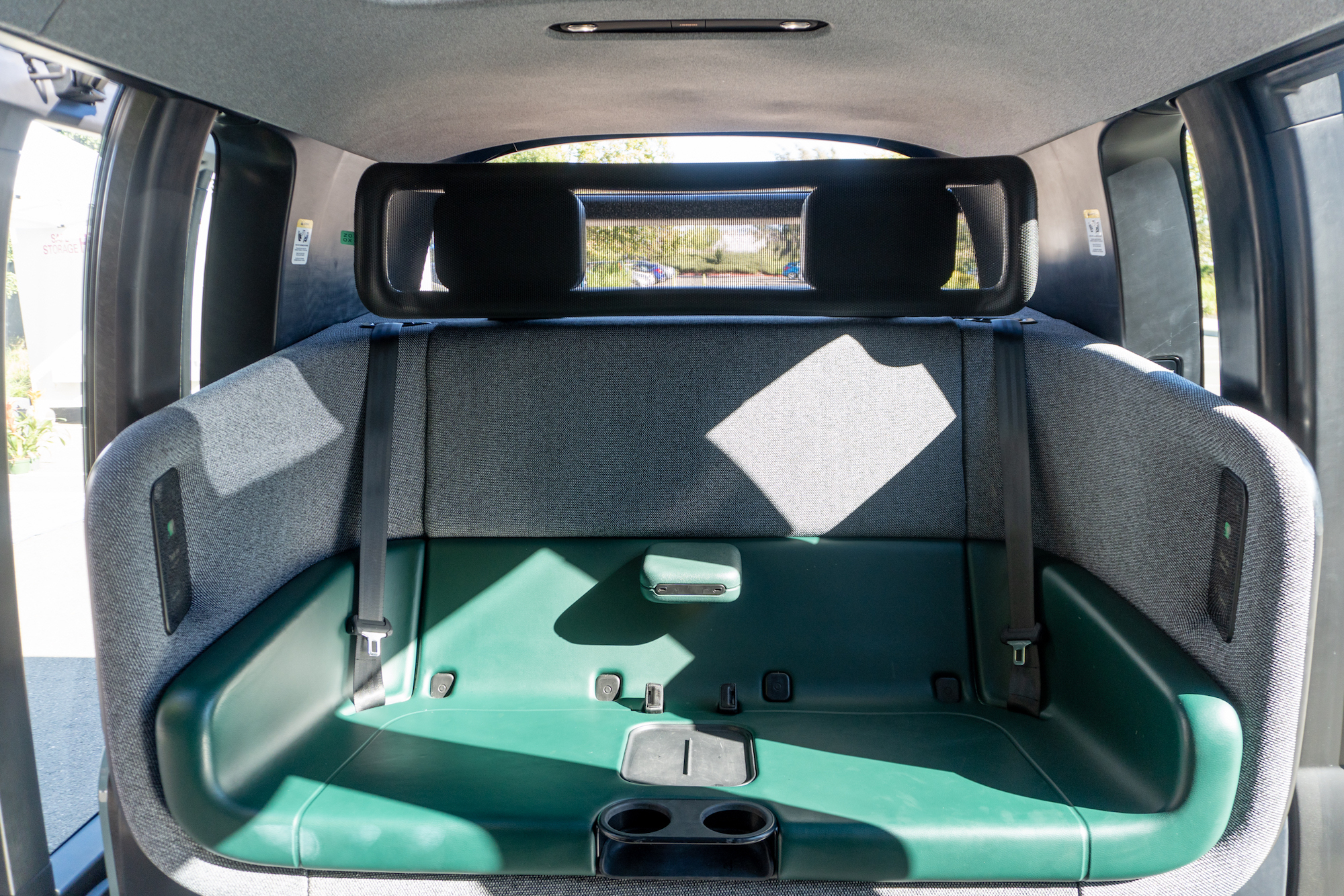
Image Credits: Roberto Baldwin
After a tour of the company’s manufacturing facility, we were placed in a “hailed” Zoox that drove us around the parking lot. The seats are comfortable with wireless charging and USB-C charge ports.
A seven-inch screen allows passengers to manage individual climate controls, listen to media, contact Zoox, and open and close the vehicle doors at the beginning and end of the ride.
We also experienced the vehicle’s ability to drive in either direction. Bi-directionality comes with the benefit of all-wheel steering in addition to an all-wheel drive vehicle. It gives the vehicle the opportunity to drive off in any direction and navigate narrow city streets.
Levinson accompanied us on our “trip” and even though the co-founders’ robotaxis are not yet being tested on city streets, he’s aware of the competition Zoox will face in the future.
Levinson believes that while initial rides might be pricey, Zoox rides will be able to undercut Uber and Lyft as it expands its network. That said, as more Zoox (Zooxs?) hit the road, can the company do so without adding more traffic to city streets the way that Uber and Lyft have. Levinson believes that since Zoox controls the vehicles at all times while Uber and Lyft drivers essentially keep driving wherever ever they please waiting to be assigned a ride, “we can be much more precise about where we send our vehicles and what they do when they’re waiting for customers.”
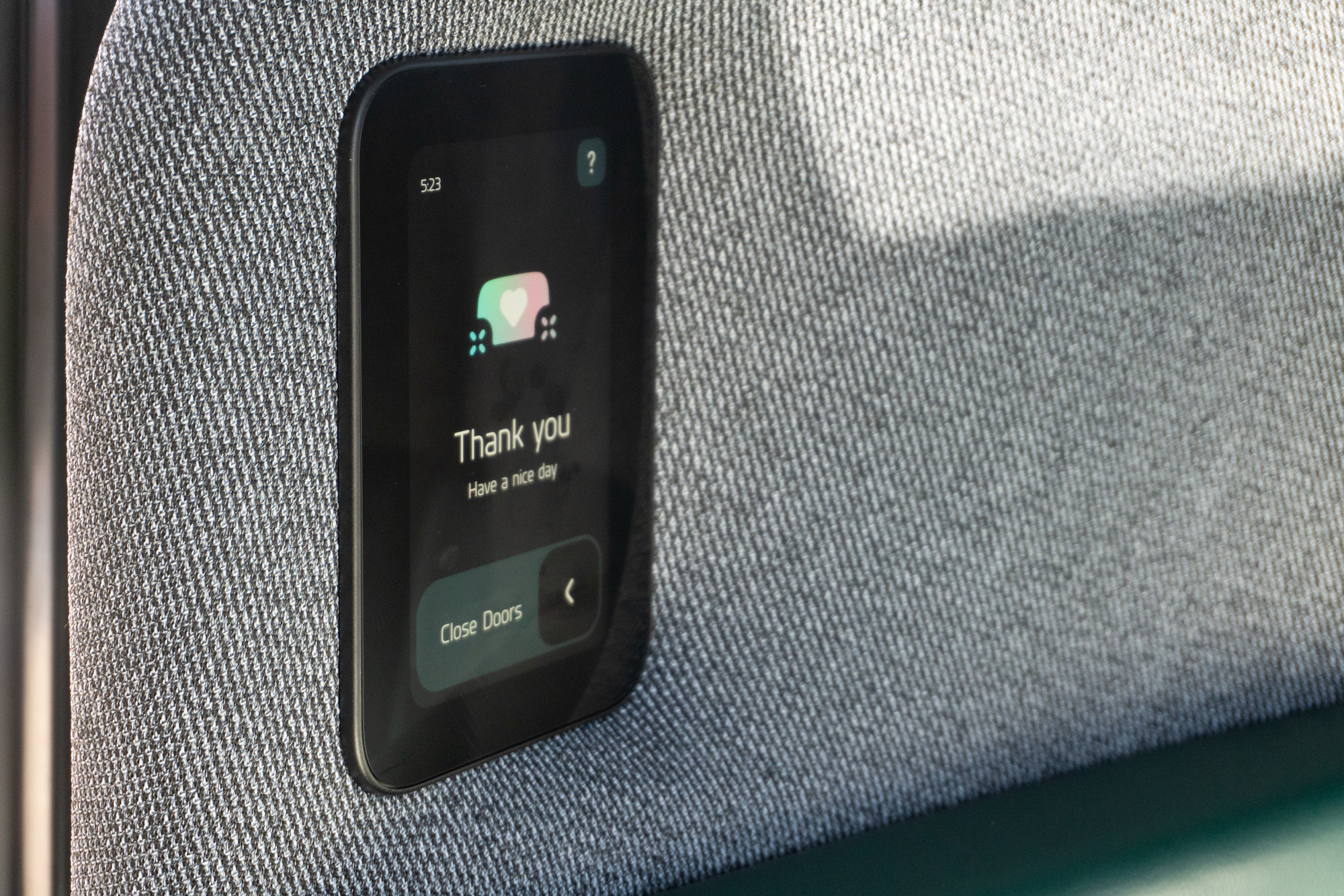
Image Credits: Roberto Baldwin
The company is also already thinking about ride-hail pooling (again without sharing timelines or offering too much in the way of specifics) as an option for its vehicles in addition to a traditional ride-hailing service.
Bringing the autonomous Zoox vehicles to the actual market in a way that builds trust with customers requires the merging of quite a lot of technologies.
“Really close”
Zoox is mum on the timing of when it will actually launch in any city, but Zoox CTO and co-founder Jesse Levinson said during a tour of the company’s manufacturing facility in Fremont, California, “We’re really close. It’s coming together.”
Since Zoox launched eight years ago, the autonomous vehicle technology world has been tumultuous, to say the least. The industry was caught up in the hype cycle only to crash into a wave of consolidation that included Uber selling off its autonomous unit in 2020 to Aurora, Cruise buying Voyage and numerous startups closing forever. Even Zoox got snapped up by Amazon.
There has been progress amid the consolidation. Waymo and Cruise, for instance, have launched limited commercial robotaxi services. Yet Cruise’s recent paid-ride-hailing launch hasn’t gone as planned. Two recent incidents with Cruise vehicles and an anonymous letter sent to California regulators has marred its autonomous ride-hailing service in San Francisco.
There have also been unfulfilled promises from Tesla and Ford during that time. Neither company has deployed a robotaxi service despite assurances to do so in 2020 and 2021 respectively. Ford has delayed its service until 2022 while Tesla’s plans are still up in the air and dependent on FSD leaving beta which doesn’t seem to be happening anytime soon.
So it’s easy to see why Zoox isn’t committing to a timeline.
Potential future vehicles
All of this is built into the current prototype it’s planning on testing on real-world roads. How the vehicle will evolve once that happens is an unknown, but Levinson and the team are considering additional autonomous vehicles of varying sizes and for different uses including delivery which should make parent company Amazon happy.
As the Zoox test ride came to an unceremonious end, we lingered in the vehicle for a few more moments. The small displays beside each passenger prompted us to open the door. It’s a small touch, but allowing riders to open doors instead of automatically doing so is a big deal. The outside world can be a dangerous and chaotic place. Being thrust into it without agency can be perilous. As a company, Zoox seems to understand this and has infused safety into a complex menagerie of autonomous and electric vehicle technology.
Building an autonomous bi-directional electric vehicle that’s safe and smart enough to get around some of the most challenging roads in the United States is a bold project. One that takes time. Just don’t ask how long.
